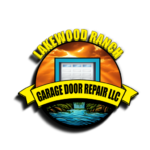
Understanding Local Regulations and Permits for Residential Gates
Adding a residential gate to your property is both a stylish upgrade and a practical decision. It enhances security, adds privacy, and elevates curb appeal. However, before installing a gate, it’s important to familiarize yourself with local regulations and permits. Failing to do so can result in costly fines or the need to redo the work completely. Additionally, maintaining and repairing your gate is essential to keep it functioning properly and looking its best over time. Whether it’s fixing a motor, replacing damaged panels, or addressing alignment issues, regular residential gate repair ensures your investment lasts. This guide will help you understand what you need to know to stay compliant, maintain your gate, and make your installation a hassle-free experience.
Why Permits and Regulations Matter
Residential gate installations can impact safety, public access, and even neighborhood aesthetics. Local governments enforce specific rules and guidelines to maintain order and ensure that structures meet safety standards. By adhering to these regulations, homeowners can avoid legal troubles and ensure the long-term durability of their gate.
Steps to Stay Compliant
Check Local Permit Requirements
Before deciding on your residential gate’s design or placement, start by contacting your local government office or zoning department. They’ll provide details about permits you might need based on your location, the type of gate, and its intended size.
Common requirements may include:
A building or installation permit
A zoning permit to check setback rules or clearance requirements
Make sure to inquire if there are any neighborhood-specific rules, especially if you live in an HOA-regulated community.
Understand Gate Height and Placement Restrictions
Most areas have restrictions on the height and placement of residential gates. For example:
Gates near public roads may need to meet setback rules (specific distances from the street).
Some neighborhoods limit gate height to avoid blocking views or affecting the uniformity of the area.
Double-check that your gate’s design and measurements comply with these rules to prevent delays in your project.
Follow Safety Standards and Compliance Codes
If your residential gate is automated, there are likely specific safety standards you’ll need to follow. Automatic gates must usually include safety devices like sensors or emergency stops to prevent accidents. Additionally, compliance with national safety codes, such as ASTM or UL standards, may be necessary for motorized gates.
Work with a professional installer familiar with local building requirements to ensure your planned gate meets all safety measures.
Where to Get Help
Navigating local residential gate regulations can sometimes feel overwhelming. That’s why it’s a good idea to work with trustworthy professionals who have experience with permits, safety codes, and installation practices.
At Lakewood Ranch Garage Door Repair, we specialize in helping homeowners install gates that enhance their homes while staying fully compliant with local regulations. From advising you on permits to ensuring a smooth installation process, we’re here to help every step of the way.
